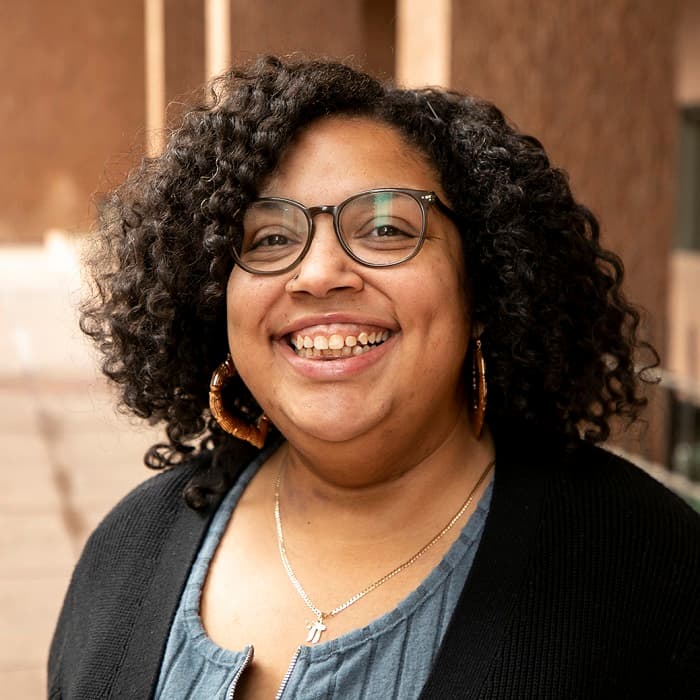A new mural representing the journey of the the Asian diaspora will be unveiled this weekend at the Auraria Campus.
Colorado Asian Pacific United (CAPU), a coalition of Asian American and Pacific Islander leaders in Denver, commissioned the mural that points to Asian immigrant history, culture and the community's presence in the city and the West.
CAPU, along with the Downtown Denver Partnership and the 5280 Trail, will present the mural and its name this Sunday. From 10:30 a.m. to 12:00 p.m., folks can visit the North Classroom building at 1200 Larimer St. to see the mural, enjoy free food and a lion dance performance in celebration of the new artwork.
The mural will live at the campus on the 5280 Trail, a 5.280 mile pathway currently being built around Downtown Denver.
Joie Ha, Vice Chair on the CAPU board, said the idea for the mural stemmed from CAPU's past efforts in publicizing Denver's rich but often forgotten Asian history.
Almost a year ago, the organization announced the creation of a different mural dedicated to the city's historic Chinatown, a once-thriving pocket of culture and Chinese-0wned businesses that was destroyed during a riot in 1880.
That mural is painted on the side of Denver Fire Station 4 near Sakura Square and was completed in June by artist Nalye Lor.

Ha said the organization received a ton of amazing proposals when work began on the first mural. Instead of letting them slip away, CAPU decided to continue working with the various artists and look for other places to put the artwork.
The opportunity presented itself at Auraria. CAPU learned that leaders of the campus were teaming up with the Downtown Denver Partnership and the 5280 Trail to curate art for the trail.
Ha added that CAPU was also interested in the location because the University of Colorado Denver recently became the first institution in the region to receive an Asian American and Native American Pacific Islander-Serving Institution designation.
To receive the designation, the school must have at least a 10% enrollment population of AAPI students. CU Denver has an undergraduate AAPI enrollment rate of 14%.
"To receive this designation is a confirmation that yes, we have a lot of community here," Ha said.

Once CAPU was awarded the mural space, they reached out to Cory Feder, a Korean American artist from Denver who currently lives in New Mexico.
Feder said when she learned about the request for the Chinatown mural, she was excited to apply and possibly be able to add her mark to the city that raised her and also create an ode to the city's Asian history.
"It felt really pressing because there was not really a trace of Asian community here when I was growing up," Feder said. "You never heard about a Chinatown existing here...I think it's always interesting to be in a place where in an ancestral way you don't really feel connected because there's no obvious sign of our stories being here. But then the more you learn, the more you realize that so many different people have migrated here... I think to be able to bring the history forward now...that's really special."
Feder said her mural was inspired by Chinese silk textile designs. The background is a flat color, but through the different weaving techniques, the foreground design flows and pops in intricate ways.
The centerpiece in Feder's mural is a dragon face, symbol of protection in various Asian cultures. Its tail turns into a set of train cars at the bottom filled with people, representing the Chinese immigrants who worked on the railroads that cut through the West. On both sides of the dragons are pink columbines, the state flower, but at a quick glance they look like lotus flowers, Feder said.

On top of the dragon's head lies mountains and two magpie birds meeting in the center surrounding a red sun. Feder said in Asian culture, especially in Korea, magpie's symbolize good fortune. On the outskirts of the magpies are people flying butterfly kites.
Feder and Ha said kites are also an important symbol throughout Asian culture. Some cultures believe kites ward off bad luck. They would write bad omens on the kites, release them into the air and cut the strings.
But in the mural, Feder and Ha said the kites fluttering in the wind represent the diaspora and the people holding onto the kites represent ties to their culture and identity.
"So even though we might be floating into an unknown territory and we don't know what the future is going to hold, we still have that thread that's tying us there," Feder said.
Ha says she hopes people attending Sunday's event will pay attention to the piece and perhaps play a game of ISpy, picking out the different components and questioning what they mean.
Feder agreed, adding that when those questions start to pop up, folks try to answer them and continue learning about Denver's Asian history.
"I would hope that people would want to question why there's this particular imagery and then look into that and learn about the history," Feder said. "I would also hope that it just makes people feel seen and feel like they're safe here and that they belong here."













